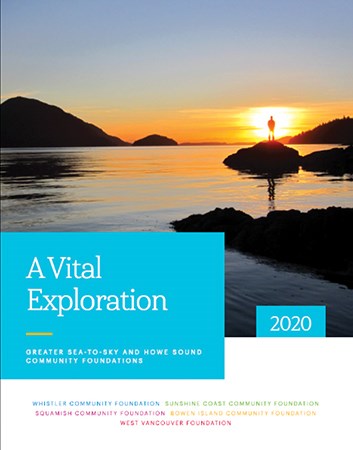A new report commissioned by community foundations in Whistler, Squamish, West Vancouver, Bowen Island, and on the Sunshine Coast “illustrates how our community lags behind in several key indicators of vitality,” the Sunshine Coast Community Foundation said this week.
The report compares demographic information – and indicators such as housing costs, income, early childhood development, and mental health – among the participating communities and with the province as a whole.
“In several of these indicators, the Sunshine Coast fares worst of all Sea-to-Sky [and] Howe Sound communities and indeed in the province,” said Manjit Kang, chair of the board of the Sunshine Coast Community Foundation.
The community foundation points out that average total household income in the region is highest in North Vancouver, at nearly $104,000, and lowest on the Sunshine Coast, at only $60,279. This translates into lower after-tax income of $28,513 for an individual living on the Sunshine Coast compared to an average of $29,783 in the province as a whole.
At the other end of the spectrum, there are fewer households with an income of more than $100,000 on the Sunshine Coast (less than 20 per cent) compared to other nearby communities (between 25 per cent in Whistler and 40 per cent in West Vancouver) and the province as a whole (nearly 25 per cent).
As well, 27 per cent of seniors on the Sunshine Coast live alone, the highest number in the five participating communities. Social isolation is a significant risk factor to health and quality of life for these vulnerable individuals.
“These statistics highlight the urgency for more services and resources to support at-risk people and families on the Sunshine Coast,” the community foundation said.
The report also demonstrates the many similarities in challenges faced by nearby communities. Rapid growth, poor transportation options, aging populations, limited employment alternatives, lack of affordable housing, and pressing challenges posed by climate change, including emergency preparedness, are shared concerns. According to the foundation, “these topics are fodder for future work together to determine whether there are regional solutions to some of these issues or at least ways of learning from and supporting each other as we work to address them.”
“These findings should concern our local governments and those organizations that serve local vulnerable populations,” said Kang. “We will be sharing this report with them and hope it will catalyze conversations to better understand the issues and identify potential solutions.”
To access a copy of the report or find out more about the work of the Sunshine Coast Community Foundation, visit www.sccfoundation.com or call 604-741-7360.
– Submitted



